ESPAÇO PARA O CORPO
Adelina Lopes
Alicia Framis
Ana Jotta
Ângela Ferreira
Anna Bella Geiger
Armanda Duarte
Charlotte Posenenske
Cristina Mateus
Guerrilla Girls
Helena Almeida
Hilda de Paulo
Julie Mehretu
Leonor Antunes
Lourdes Castro
Luisa Cunha
Maria José Aguiar
Marlene Dumas
Nalini Malani
Patrícia Garrido
Sanja Iveković
3 2
COLEÇÃO DA FUNDAÇÃO DE SERRALVES MUSEU DE ARTE CONTEMPORÂNEA EXPOSIÇÕES ITINERANTES
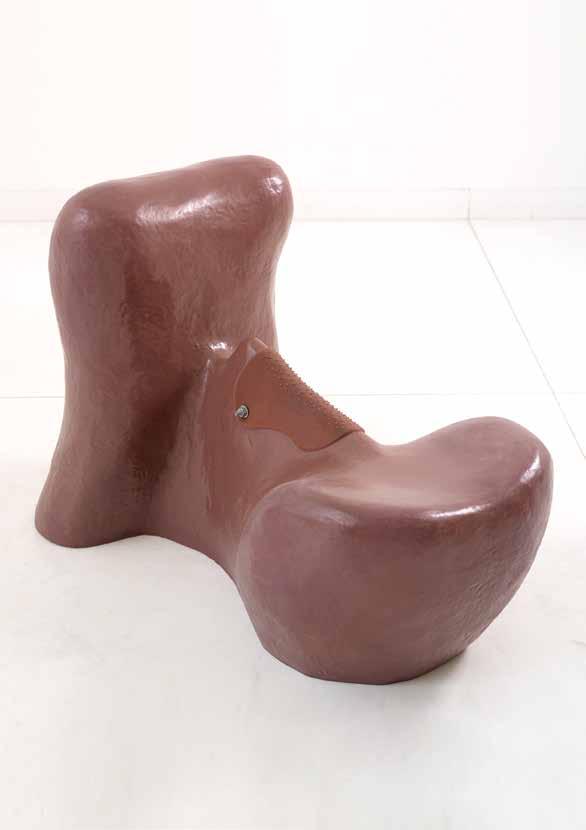
4 PATRÍCIA GARRIDO O prazer é todo meu I, 1994
“O corpo não é uma coisa, é uma situação: é a nossa tomada de posse do mundo e o esboço dos nossos projetos.”
Espaço para o corpo apresenta um conjunto de obras de artistas portuguesas e internacionais que problematizam o corpo enquanto agente criativo e percetivo, explorando a sua relação com o espaço e com a arquitetura, com a identidade e a intimidade. A exposição centra-se no trabalho de mulheres artistas que contribuem para aprofundar uma reflexão em torno do espaço e do corpo e para contestar os seus limites, explorando, por um lado, os contornos formais, fenomenológicos e conceptuais desta temática, por outro as suas implicações pessoais, sociais e políticas.
Encarar o corpo enquanto situação, como mediador do mundo e agregador de experiências e memórias, abre terreno para explorar questões de identidade que permeiam o trabalho de diferentes artistas representadas nesta exposição. A mostra é constituída por obras que se relacionam com o ato de habitar, apelando aos sentidos e ao movimento do espectador pelo espaço, bem como por trabalhos de artistas que anulam os limites entre o seu corpo e a sua prática uma abordagem que ganha maior expressão nas décadas de 1960 e 70. A performance e o vídeo tornam-se meios de eleição neste período pelo seu imediatismo e frontalidade, adaptando-se à postura experimental destas artistas e às práticas de exploração corporal que perseguem. Espaço para o corpo reúne trabalhos deste período até à atualidade, abrangendo o arco temporal representativo da Coleção de Serralves.
As obras de Ana Jotta (Lisboa, 1946) e Armanda Duarte (Praia do Ribatejo, 1961) relacionam-se com os espaços que habitamos e contruímos. As artistas transportam para o espaço expositivo memórias e vestígios de outros espaços por si habitados, sejam eles absolutamente banais, como o anónimo quarto de hotel retratado por Jotta em You are here (c. 1995); ou inteiramente íntimos, como o atelier de Duarte, cujo pavimento foi retalhado e acondicionado em Transporte aos quadradinhos (2001 – 2005), passando a ser móvel e adaptável a outros lugares.
Paralelamente, os trabalhos de Alicia Framis (Barcelona, Espanha, 1967) e Ângela Ferreira (Maputo, Moçambique, 1958) apresentados na exposição examinam a forma arquitetónica, a função do espaço construído e o seu usufruto. Alicia Framis investiga temas de cariz social e político associados à realidade urbana contemporânea e à condição da mulher na sociedade de consumo, aliando na sua prática interdisciplinar arte, arquitetura, moda e performance. O projeto Billboardhouse (2000 – 2009) parte de uma reflexão sobre as transformações funcionais da habitação num contexto urbano densamente construído e populado. Encarando a cidade enquanto extensão social do espaço doméstico, Framis concebe uma proposta alternativa de habitação reduzida a um espaço de pernoite, ladeado por painéis publicitários que assegurariam o financiamento da construção. A artista opta por incluir no protótipo de Billboard Thailandhouse (2001)2 campanhas publicitárias que apresentam o corpo feminino enquanto produto, expandindo a reflexão crítica em torno da objetificação da mulher que é central à sua prática.
1 Le Deuxième Sexe. Paris: Éditions Gallimard, 1949. (Lisboa: Quetzal Editores, 2015).
2 O projeto Billboard Thailandhouse eleva-se do solo e abre-se para o exterior de forma a adaptar-se ao clima quente e chuvoso da Tailândia, tendo sido concebido para integrar o projeto comunitário Land, desenvolvido a partir de 1998 pelos artistas tailandeses Kamin Lertchaiprasert e Rirkrit Tiravanija na província de Chiang Mai, na Tailândia.
7 6
Simone de Beauvoir1
A série “Marquises” de Ângela Ferreira parte da investigação realizada pela artista em 1993 na cidade do Porto, nos bairros de Contumil e da Pasteleira e em ilhas da Boavista e da Lapa, durante a qual documentou diferentes tipos de estruturas, frequentemente construídas pelos moradores como forma de ampliar a área habitável dos seus espaços domésticos. Geralmente improvisadas e ilegais, erguidas na tentativa de remediar situações de precariedade habitacional, as marquises marcam a paisagem urbana e suburbana de todo o país. Para além das fotografias apresentadas na exposição, a série é constituída por um conjunto de objetos escultóricos produzidos com materiais industriais habitualmente utilizados nestas construções, que seguem, contudo, o rigor construtivo e a depuração formal próprios da linguagem modernista, confrontando a informalidade da construção popular e o purismo da arquitetura moderna.
O ideal arquitetónico de modernidade, o papel social e político da imagem publicitária e a ambivalência entre espaço público e privado, são também temas centrais à obra Novi Zagreb (Ljudi iza prozora) [Nova Zagreb (Pessoas por trás das janelas)] (1979) de Sanja Iveković (Zagreb, Croácia, 1949). A artista apropria uma fotografia da visita do Presidente Josep Tito a Zagreb em 1979 difundida nos meios de comunicação oficiais jugoslavos, retratando a pompa da parada presidencial. Iveković intervém na imagem destacando com cores primárias uma série de varandas do edifício modernista3 que surge em plano de fundo, onde se distinguem moradores em pé, contrariando as diretivas de segurança ditadas pelo governo. A obra revela um subtil gesto de resistência perante o repressivo regime que marcou a região durante quatro décadas, contestando mecanismos de controlo e vigilância sobre espaços e ações na esfera pública e privada.
Os padrões geométricos e cromáticos que marcam a obra de Sanja Iveković encontram eco no filme de animação Dream Houses (version I) [Casas de Sonho (versão I)] (1969) de Nalini Malani (Carachi, Paquistão, 1946), artista indiana pioneira da videoarte e do cinema experimental no país. Trata-se do seu primeiro filme experimental, uma animação em película de 8 mm produzida no icónico atelier interdisciplinar Vision Exchange Workshop (VIEW), sediado em Mumbai, no qual Malani foi a única participante mulher. Dream Houses inspira-se nas explorações formais da arquitetura moderna indiana e no idealismo que marcou o fim do domínio colonial no país, nomeadamente nos utópicos ideais modernos que preconizavam grandes projetos urbanos enquanto solução para os graves problemas de habitação e pobreza.
3 As tonalidades que a artista introduz na fachada modular do edifício são semelhantes às utilizadas em diversos edifícios modernos, nomeadamente nas varandas das icónicas Unités d’Habitation [Unidades de Habitação] projetadas por Le Corbusier a partir de 1945.
A obra Paving stones across the garden (2008), de Leonor Antunes (Lisboa, 1972), parte também do estudo da arquitetura moderna, dos elementos geométricos que lhe dão forma e da noção de casa enquanto lugar de criação. A escultura integra uma série de trabalhos intitulada “Original is full of doubts” [O original está cheio de dúvidas], que parte da sua investigação em torno da casa E-1027, da autoria de Eileen Gray e Jean Badovici, construída no Sul de França entre 1926 e 1929. A série centra-se em pormenores da casa como divisórias, janelas e lajes do pavimento, que a artista mede e reproduz à escala real, recorrendo a materiais leves ou dúcteis como a madeira, o couro e a corda. Os títulos das obras correspondem a passagens do texto “De l’éclectisme au doute” [Do ecletismo à dúvida], no qual Gray discorre sobre os preceitos que informaram a conceção da casa, advogando uma arquitetura humana, aliada ao conforto, à emoção e à intimidade. Cada obra é composta por dois elementos idênticos que se adoçam aos limites do espaço expositivo de diferentes formas, conduzindo o movimento do corpo e ativando o espaço entre si. Subjacente ao trabalho de Leonor Antunes está uma afeição pelas qualidades táteis das matérias que utiliza: a
9 8
artista compara a relação que estabelece com o seu trabalho ao ato de cuidar, como quem cuida do seu corpo ou de alguém próximo. Antunes tem investigado o trabalho de figuras do mundo da arte, do design e da arquitetura, particularmente mulheres, que mantiveram percursos à margem do cânone e cujo reconhecimento tardou (ou tarda ainda) em chegar, procurando também zelar pelo seu legado artístico.
O primeiro núcleo da exposição termina com um discreto desenho de Julie Mehretu (Adis Abeba, Etiópia, 1970). Célebre pelas suas pinturas de grande escala em que se sobrepõem fragmentos de mapas, de elementos arquitetónicos, estruturas urbanas, geografias abstratas e “espaços de poder”, Julie Mehretu constrói a sua prática a partir do desenho, do contorno rígido e fluído de espaços reais e imaginados. A série
“Mind Breath Drawings” [Desenhos de respiração mental] (2012) surge deste lugar de origem, de espontaneidade e de impulso, que a artista descreve como uma “psicogeografia”: um “espaço criativo, invisível e inventado, onde é possível encontrar um recurso de autodeterminação e resistência”4.
Mais adiante, a obra de Cristina Mateus (Porto, 1968) faz-se anunciar antes de ser vista. A voz de uma mulher profere compassadamente as palavras “sim” e “não”. O som é proveniente de dois monitores dispostos frente a frente que exibem o mesmo rosto. É esta figura que mantém consigo mesma o enigmático diálogo monossilábico. Nos momentos de silêncio parece haver algo que é transmitido pelo olhar frontal deste rosto duplicado, algo que não é vocalizado, não sendo assimilável pelo espectador. O corpo desta mulher está ausente, existindo em seu lugar um vazio que mantém os rostos à sua altura humana. Como acontece em vários trabalhos da artista, é o vazio que dá corpo à obra: o espaço vago que sustenta os monitores, a distância entre os rostos, o silêncio
entre respostas, a discrepância entre as duas faces da mesma pessoa. Subvertendo o seu binómio de origem, Sim-Não (1998) celebra a ambiguidade, a contradição e a complexidade.
A simplicidade e a economia de meios são características da obra de Adelina Lopes (Braga, 1970), que explora as propriedades físicas e alegóricas de materiais como a água, o vidro e, particularmente, o espelho um objeto repetidamente invocado em reflexões sobre identidade e representação. As potencialidades ilusórias deste dispositivo especular são exploradas na obra Sem Título (2 espelhos partidos) (2006), na qual Adelina Lopes encena um incidente ocasional de destruição que, na realidade, é minuciosamente controlado pela artista. Os trabalhos de Adelina Lopes e Cristina Mateus criam situações de confronto entre o corpo e a sua imagem rejeitando um entendimento rígido e unívoco da realidade para privilegiar uma visão desta enquanto entidade fragmentada, ambígua e fugaz.
As relações dialéticas entre presença e ausência, materialidade e imaterialidade são exploradas magistralmente por Lourdes Castro (Funchal, 1930 – 2022). Durante décadas a artista dedicou-se ao estudo da sombra de tudo o que a rodeava pessoas, objetos, plantas como expressão poética da sua relação afetiva com o mundo. As silhuetas de amigos e conhecidos surgem representadas não só em papel e em tela, mas também em materiais pouco comuns, como o plexiglass e o rodhoïd que lhes conferem corpo, cor e transparência ou em simples lençóis, nos quais a artista borda as célebres sombras deitadas. Estes trabalhos definem um território pessoal, um registo de uma situação de intimidade, na qual os limites de dois corpos se fundem num único contorno.
A obra de Helena Almeida (Lisboa, 1934 – 2018) relaciona de forma notável o corpo e o espaço, a pintura e a fotografia. As suas pinturas habitadas são, de facto, fotografias em que a artista se retrata a pintar, sobrepondo traços e manchas de
11 10
4 Julie Mehretu: Drawing into Painting, cat. exp., Minneapolis: Walker Art Center, 2003, p. 14.
tinta à sua imagem de forma a dilatar o espaço da obra que habita. A artista associa o tom de azul que utiliza com a criação de espaço, como esclarece: “Uso o azul porque é uma cor espacial. É mesmo o espaço, é engolir a pintura, é pôr o espaço na pintura. É agarrar na pintura… Tem de ser azul”5. O modo como Helena Almeida associa o ato de pintar a um processo de autorreconhecimento é central ao seu trabalho, no qual criadora e criação, corpo e obra se tornam um só.
Espaço para o corpo inclui dois vídeos históricos de artistas que se afirmaram na década de 1970 explorando contornos pessoais e políticos de questões identitárias. Rejeitando a iconografia canónica do corpo feminino, perpetuamente objetificado e subjugado pelo olhar masculino, estas artistas reclamam para si o poder de representação e ativação do seu corpo como meio de expressão artística, como agente criativo e político. Na obra Passagens #1 (1974) a artista Anna Bella Geiger (Rio de Janeiro, Brasil, 1933), pioneira da vídeo arte no Brasil, ascende por escadas que se sucedem infinitamente, passando de cenário em cenário, sem chegar a lugar algum. Sanja Iveković surge de novo na exposição, dando o corpo ao manifesto. No célebre vídeo Instructions #1, [Instruções #1] (1976), retrata-se encarando a câmara com um olhar intenso enquanto desenha no seu rosto linhas idênticas às que vemos em instruções de aplicação e anúncios de produtos de cosmética, num gesto insubmisso de crítica aos padrões de beleza preconizados pela sociedade de consumo.
À primeira vista, a obra A Amante Ideal (Depois de Emília Nadal) (2021), de Hilda de Paulo (Inhumas, Brasil, 1987), recentemente integrada na Coleção de Serralves por doação da artista, apresenta também uma perspetiva crítica sobre os estereótipos perpetuados em produtos de consumo, mas na verdade as suas implicações artísticas, sociais e políticas extravasam em muito esta leitura. A residir no Porto desde 2008,
a artista, poeta, investigadora e curadora afirma-se como “travesti terceiro-mundista defensora do transfeminismo”6, propondo na sua prática multidisciplinar a desconstrução de narrativas normativas, cisgéneras e coloniais. Neste trabalho, Hilda de Paulo referencia uma célebre obra de Emília Nadal intitulada A Esposa Ideal (1977) em que Nadal apropria, à semelhança de outros trabalhos do mesmo período, a linguagem publicitária e a forma de embalagens de bens alimentares instantâneos, comentando a ubiquidade e perversidade dos mecanismos de manipulação inerentes à sociedade de consumo. Revistando esta obra com um olhar crítico, Hilda de Paulo desafia não só os rótulos de “esposa” e “amante” refletidos na sociedade patriarcal, expondo o seu enviesamento sexista e normativo, como denuncia o preconceito, o apagamento e a violência sobre corpos e identidades tidas por dissidentes.
6 Em conversa com a curadora, Hilda de Paulo esclarece: “O termo ‘travesti’ nasceu dentro das ditaduras da América Latina como uma forma pejorativa de chamar as pessoas que não se enquadravam dentro do padrão cisgénero normativo. Hoje, o movimento trans e travesti latino-americano se empodera, ressignificando a palavra ‘travesti’ como um símbolo de força, de unicidade e de revolução. Por isso, não faz sentido traduzir ‘travesti’ para ‘mulher trans’ como erroneamente ocorre em Portugal, porque a palavra por si só carrega toda uma simbologia, uma representação, um papel e um lugar social dentro do contexto latino-americano. Portanto, travesti é uma identidade de gênero feminina latino-americana, sendo que a pessoa nem sempre se identifica de uma forma binária, não sendo ela nem homem e nem necessariamente mulher, apenas a travesti. Já o termo ‘terceiro-mundista’, é emprestado da escritora chicana Gloria Anzaldúa para se referir às travestis e pessoas trans imigrantes que vivem em Portugal e que são constantemente atravessadas pela transfobia, desigualdade e racismo como marcas diárias da vida social. A utilização do termo torna visível a produção de condições de vida características do terceiro mundo no interior dos limites territoriais de um Estado que pertence a um primeiro mundo.” A artista referencia, entre muitos outros textos que informam os estudos trans e queer, a publicação Transfeminismo de Letícia Nascimento, na qual a autora refere: “Reitero que qualquer verdade universal sobre os nossos corpos é um entrave para o feminismo. Não é a nossa ‘anatomia biológica’ que produz o género, mas o género, como indica Butler (2017), é o próprio processo pelo qual os corpos se tornam matéria. Afinal, nós não somos nossos corpos, nós fazemos nossos corpos. (…) Se, enquanto mulheres transexuais e travestis, interessamo-nos por uma vinculação ao feminismo, é porque compreendemos que nossas identidades dentro das mulheridades e/ou das feminilidades possuem conexões com as construções identitárias coletivas dentro do feminismo.” p. 40; 43 (São Paulo: Jandaíra, 2021). Para saber mais sobre a obra e o pensamento de Hilda de Paulo consultar: ciaexcessos.com.br/hilda-de-paulo/. Para uma leitura aprofundada acerca da utilização da palavra “travesti” consultar: Camila Sosa Villada, As Malditas, Lisboa: BCF Editores, 2022.
13 12
5 Helena Almeida: Habitar a obra, cat. exp., Porto: Fundação de Serralves, 2015, p. 132.

14
HILDA DE PAULO
A Amante Ideal (Depois de Emília Nadal), 2021
Desde a sua criação em 1985, o grupo anónimo de artistas feministas Guerrilla Girls (Nova Iorque, EUA) tem-se dedicado à denuncia de desigualdades de género e raça no mundo da arte. O seu trabalho, emblemático pela formulação de interrogações provocatórias e pela utilização de máscaras que conferem ao grupo o anonimato e a unidade identitária pretendidas, é distribuído massivamente sob a forma de materiais publicitários como cartazes e autocolantes, assumindo uma linguagem artística radical e democrática, intimamente associada ao ativismo político.
Uma das artistas mais influentes da sua geração, Marlene Dumas (Cidade do Cabo, África do Sul, 1953) tem-se dedicado desde a década de 1970 quase exclusivamente à representação da figura humana, abordando temas relacionados com a identidade, a sensualidade, a maternidade, a violência e a morte.
Na série “Defining the Negative” [Definição pela negativa]
(1998) Dumas contesta o papel da mulher na arte, retratada enquanto modelo, musa ou amante, escrevinhando provocações aos artistas seus pares: “Não poso para o Sr. Salle, não durmo na cama do Sr. Fischl, não me vão pôr de pernas para o ar para o Sr. Baselitz”7. Realizada no mesmo período, a série de desenhos “No Interviews, Please” [Entrevistas não, por favor] (1980 – 1989), revela preocupações semelhantes, retratando um conjunto de figuras de forma crua e despretensiosa, a tinta e lápis sobre papéis variados, acompanhadas também elas de confissões, aforismos e provocações como: “Very sensitive artist. Don’t touch” [Artista muito sensível. Não tocar].
As obras de Maria José Aguiar (Barcelos, 1948) e Patrícia
Garrido (Lisboa, 1963) apresentadas na exposição celebram a sexualidade e o prazer femininos com humor e ironia. A prática de Maria José Aguiar, centrada na pintura, é marcada pela expressão livre do desejo e do impulso erótico da mulher.
7 Serralves 2009: A Coleção, cat. exp., Porto: Fundação de Serralves, 2009, p. 142.
Se em séries anteriores explorou a estilização e seriação iconográfica dos órgãos sexuais, na série “Dobble” privilegia a ambiguidade das formas, a sensualidade dos tons e a materialidade da pintura. As esculturas de Patrícia Garrido intituladas O prazer é todo meu (1994) são modeladas em espuma para se adaptarem ao corpo da artista, sendo revestidas a silicone e poliéster em tons rosados que lhes conferem o seu aspeto lascivo e carnal. São esculturas intrigantes que aparentam ter um uso, porque são mais de que “negativos de um corpo”, são objetos de prazer.
Espaço para o corpo culmina no espaço exterior do claustro do museu com duas obras de artistas para quem corpo e espaço estão profundamente interligados. Charlotte
Posenenske (Wiesbaden, 1930 – Frankfurt am Main, Alemanha, 1985) dedicou-se à produção artística durante um breve período da sua vida, entre as décadas de 1950 e 1960, deixando, contudo, um corpo de trabalho singular alicerçado no seu entendimento democrático da arte. Durante os anos 1960 o seu trabalho foi exposto lado a lado com o de consagrados artistas minimalistas americanos, como Donald Judd, Sol Lewitt e Carl Andre8, com quem partilhava o interesse pela serialidade e pela depuração formal, por processos de produção industrial rejeitando a expressividade do gesto do artista e pela estreita relação com a envolvente e com o movimento do corpo pelo espaço. No entanto, o trabalho da artista alemã desde logo se destacou pela sua radical resistência ao conceito de autoria e ao sistema de valor estabelecido pelo mercado da arte. Posenenske concebe a sua prática enquanto processo em aberto, desenvolvendo séries escultóricas de produção ilimitada e económica que podem assumir diferentes combinações, sendo a criação compositiva deixada ao critério de quem as expõe. A obra Series C Relief
8 Alexis Lowry, Jessica Morgan (ed.), Charlotte Posenenske: Work in Progress, Nova Iorque: Dia Art Foundation, 2019, pp. 41-43.
17 16
(1967 – 2010) pertence a uma destas séries ilimitadas, concebida em 1967 e produzida após a morte da artista segundo os protótipos e as indicações que deixou.
Na peça de som Words for Gardens (2006 – 2007), Luisa Cunha (Lisboa, 1949) partilha com o visitante um conjunto de instruções simples para desenhar um jardim. Partindo dos elementos fundamentais do desenho, o ponto e a linha, a artista delega no público a criação de uma paisagem abstrata que ganha forma no confronto com a envolvente natural. Através da linguagem, Luisa Cunha estabelece uma relação de cumplicidade entre artista e espectador, espaço real e espaço imaginado. De regresso ao início, é neste diálogo entre o universo interior e exterior, pessoal e político, formal e social, que as artistas representadas nesta exposição criam espaço para o corpo.
19 18
LEONOR ANTUNES
Paving stones across the garden, 2008
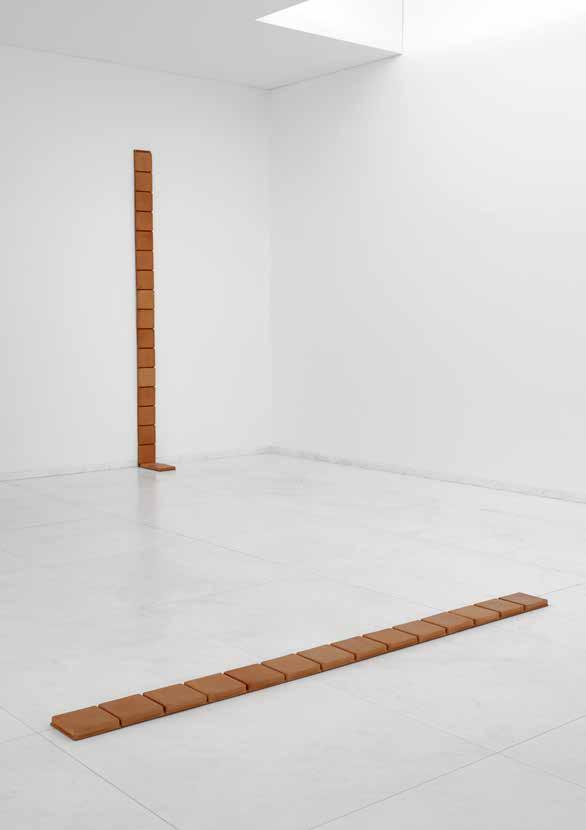
20
LOURDES CASTRO
Sombra projectada: [Acrílico com sombra rosa], n.d.
Acrílico rosa. Edição de autor
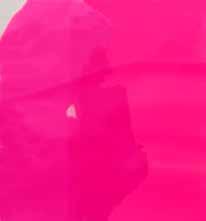
61 x 59 cm
Livros e Edições de Artista. Col. Fundação de Serralves Museu de Arte Contemporânea, Porto.
LOURDES CASTRO
Sombras deitadas, (Paris) 1969
Tecido bordado à mão
275 x 218 cm
Coleção de Arte Contemporânea do Estado, em depósito na Fundação de Serralves Museu de Arte Contemporânea, Porto. Depósito em 1990
CHARLOTTE POSENENSKE
Series C Relief, 1967 – 2010
Alumínio convexo, tinta amarela mate (4 elementos). Edição
ilimitada
40 x 125,1 x 40 cm (cada)

Col. Fundação de Serralves Museu de Arte Contemporânea, Porto.
Aquisição em 2013
NALINI MALANI
Dream Houses (version I), 1969
Vídeo, cor, som, 2’07’’. Ed. 4/10 + PA
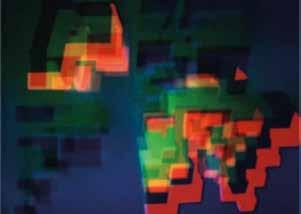
Col. Fundação de Serralves Museu de Arte Contemporânea, Porto. Doação da artista em 2022
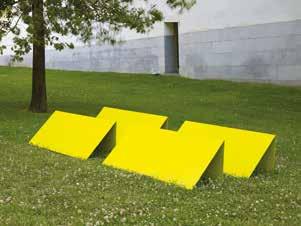
23 22
ANNA BELLA GEIGER
Passagens #1, 1974
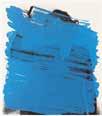

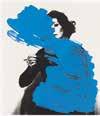
Vídeo, p/b, som, 4:3, PAL, 9’50”
Col. Fundação de Serralves Museu de Arte Contemporânea, Porto. Aquisição em 1999
SANJA IVEKOVIĆ
Instructions #1, 1976
Vídeo, p/b, sem som, 4:3, PAL, 6’03’’

Col. Fundação de Serralves Museu de Arte Contemporânea, Porto. Aquisição em 2010
HELENA ALMEIDA

Pintura Habitada, 1976


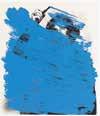
Serigrafia sobre papel (3 elementos). Ed. 5/30
64,5 x 99 cm (cada)
Col. Museu Nacional de Soares dos Reis, em depósito na Fundação de Serralves Museu de Arte Contemporânea, Porto. Depósito em 1990
SANJA IVEKOVIĆ
Novi Zagreb (Ljudi iza prozora), 1979
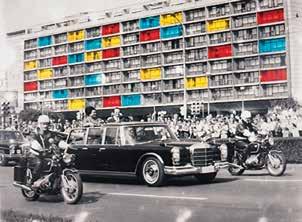
Fotografia pintada à mão e fotografada posteriormente. Ed. 2/4 + 2 PA
105 x 144,5 cm
Col. Fundação de Serralves Museu de Arte Contemporânea, Porto. Aquisição em 2010
25 24
MARLENE DUMAS
No Interviews, Please, 1980 – 1989
Tinta acrílica, lápis de cera e lápis sobre papel (20 elementos)
c. 30 x 22 cm (cada)
Col. Fundação de Serralves Museu de Arte Contemporânea, Porto.
Doação da artista em 2010
GUERRILLA GIRLS

When racism & sexism are no longer fashionable, what will your art collection be worth?, 1989
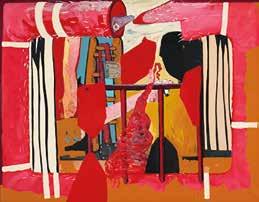

Cartaz (impressão offset sobre papel)
43 x 56 cm
Livros e Edições de Artista. Col. Fundação de Serralves Museu de Arte Contemporânea, Porto
MARIA JOSÉ AGUIAR
Dobble, 1985 – 1986
Esmalte acrílico sobre tela

140 x 180,5 cm
Coleção de Arte Contemporânea do Estado, em depósito na Fundação de Serralves Museu de Arte Contemporânea, Porto.
Depósito em 1990
ÂNGELA FERREIRA
Sem título (da série “Marquises”), 1993
Fotografia a cores montada sobre alumínio (3 elementos)
60 x 40 cm (cada)
Col. Fundação de Serralves Museu de Arte Contemporânea, Porto.
Aquisição em 1996

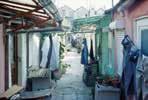
27 26
PATRÍCIA GARRIDO
O prazer é todo meu I, 1994
Poliester, silicone, ferro
82 x 55 x 60 cm
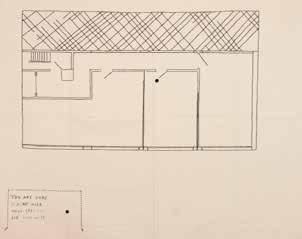
Col. Fundação de Serralves Museu de Arte Contemporânea, Porto.
Doação da artista em 1997
PATRÍCIA GARRIDO
O prazer é todo meu III, 1994
Poliester, silicone, ferro
52 x 136 x 70 cm
Col. Fundação de Serralves Museu de Arte Contemporânea, Porto.
Aquisição em 1996
PATRÍCIA GARRIDO
O prazer é todo meu II, 1994
Poliester, silicone, ferro
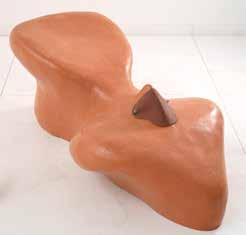
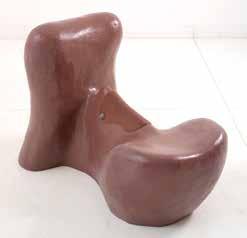

67 x 90 x 47 cm
Col. Fundação de Serralves Museu de Arte Contemporânea, Porto.
Aquisição em 1996
ANA JOTTA
You are here, c. 1995
Pano cru bordado e debruado a fita de nastro
114 x 143,5 cm
Col. Fundação de Serralves Museu de Arte Contemporânea, Porto.
Aquisição em 2006
29 28
CRISTINA MATEUS
Sim-Não, 1996
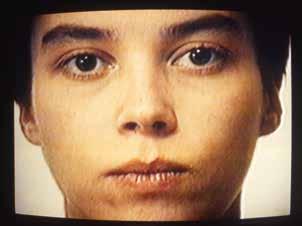
Instalação vídeo de 2 canais (cor, som, 4’56”), televisores, leitores vídeo, prateleiras de madeira
Dimensões variáveis
Col. Ivo Martins, em depósito na Fundação de Serralves Museu de Arte Contemporânea, Porto. Depósito em 2000
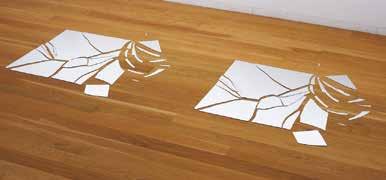
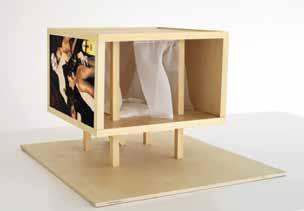
ARMANDA DUARTE
Transporte aos quadradinhos, 2001 – 2005
Alcatifa, pingos de tinta
Dimensões variáveis
Col. Ivo Martins, em depósito na Fundação de Serralves Museu de Arte Contemporânea, Porto. Depósito em 2010
ALICIA FRAMIS
Billboard Thailandhouse, 2001
Madeira, tecido, fotografia a cores. Ed. 2/5
35,8 x 51,7 x 56,9 cm
Col. Fundação de Serralves Museu de Arte Contemporânea, Porto. Aquisição em 2006
ADELINA LOPES
Sem título (2 espelhos partidos), 2006
Espelhos. Edição única
Dimensões variáveis
Col. Fundação de Serralves Museu de Arte Contemporânea, Porto. Aquisição em 2009

31 30
LUISA CUNHA
Words for Gardens, 2006 – 2007
Auscultadores, leitor de CD, voz gravada (5’42’’, loop)
Dimensões variáveis
Col. Fundação de Serralves Museu de Arte Contemporânea, Porto. Aquisição em 2009
JULIE MEHRETU
Mind Breath Drawings, 2012

Grafite sobre papel
56 x 76 cm
Col. Fundação de Serralves Museu de Arte Contemporânea, Porto. Aquisição em 2013
LEONOR ANTUNES
Paving stones across the garden, 2008
Couro (2 elementos). Ed. 2 + 1 PA
Dimensões variáveis
Col. Fundação de Serralves Museu de Arte Contemporânea, Porto.
Aquisição em 2013
HILDA DE PAULO
A Amante Ideal (Depois de Emília Nadal), 2021

Objeto
30 x 16 cm Ø
Col. Fundação de Serralves Museu de Arte Contemporânea, Porto. Doação da artista em 2023
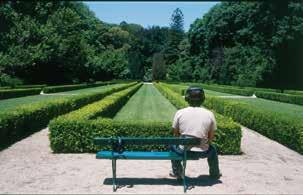
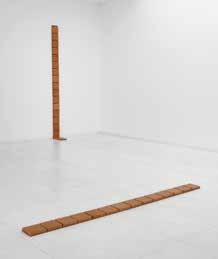
33 32
Instructions #1, 1976
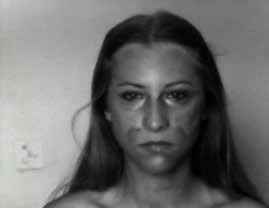


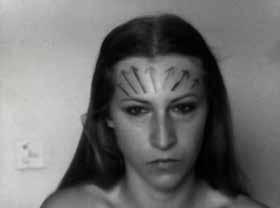



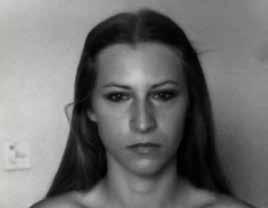
35 34
Ć
SANJA IVEKOVI
Space for the Body presents a group of works by Portuguese and international women artists that focus on the body as a creative and perceptive agent, exploring its relationship with space, architecture, identity, and intimacy. The exhibition focuses on the works of women artists who have deepened a reflection about space and the body, challenging its limits. While some artists explore the formal, phenomenological, and conceptual outlines of this theme, others delve into its personal, social, and political implications.
Positing the body as a situation, as a mediator of the world and as an aggregator of experiences and memories, opens paths of investigation into questions of identity that run across the works of different artists represented in the show. The exhibition consists of works that appeal to the senses and to the viewer’s movement through space and relate to the act of inhabiting, as well as works by artists that dissolve the limits between their body and their artistic practice an approach that gained expression in the 1960s and 1970s. Performance and video became important artistic media during this period due to their immediacy and straightforwardness, conforming to the experimental outlook of these artists and to their focus on the body. Space for the Body brings together works from this period to the present day, covering the representative time span of the Serralves Collection.
The works of Ana Jotta (Lisbon, Portugal, 1946) and Armanda Duarte (Praia do Ribatejo, Portugal, 1961) are related with the spaces that we inhabit and construct. These two artists bring
to the exhibition space memories and traces of other places they have inhabited whether these are absolutely banal, such as the anonymous hotel room portrayed by Jotta in You Are Here (c. 1995), or entirely intimate, such as Duarte’s studio, whose floor was dismantled and packed away in Transporte aos quadradinhos [Transport in Small Squares] (2001–2005), thus being made mobile and adaptable to other places.
In parallel, the works by Alicia Framis (Barcelona, Spain, 1967) and Ângela Ferreira (Maputo, Mozambique, 1958), presented in the exhibition, examine the architectural form, function of the built space and its use and fruition. Alicia Framis investigates themes of a social and political nature associated with contemporary urban reality and the condition of women in the consumer society, combining art, architecture, fashion and performance in her interdisciplinary practice. The Billboardhouse project (2000–2009) is based on a reflection about the functional transformations of housing in a densely constructed and heavily populated context. Considering the city as a social extension of the domestic space, Framis conceives an alternative housing proposal, reduced to a space for an overnight stay, flanked by billboards that would guarantee the financing of the construction. In the prototype of Billboard Thailandhouse (2001)2, the artist chose to include advertising campaigns that present the female body as a product, further expanding the critical reflection about the objectification of women, which is central to her practice.
The series ‘Marquises’ [Sunroom Balconies] by Ângela Ferreira, springs from the research that the artist undertook in 1993 in the city of Porto, in the neighbourhoods of Contumil and Pasteleira and in the low-cost housing clusters (‘ilhas’) of
37 36
‘The body is not a thing, it is a situation: it is our grasp on the world and our sketch of our project.’
Simone de Beauvoir1
1 Le Deuxième Sexe. Paris: Éditions Gallimard, 1949.
2 The Billboard Thailandhouse project rises from the ground and opens onto the outside in order to adapt to the hot and rainy climate of Thailand. It was designed to form part of the community project known as the Land, developed from 1998 onwards by the Thai artists Kamin Lertchaiprasert and Rirkrit Tiravanija in the province of Chiang Mai, in Thailand.
Boavista and Lapa, during which she documented different types of structures, frequently built by the residents themselves as a way of enlarging the inhabitable area of their domestic spaces. Usually improvised and illegal, erected in an attempt to remedy precarious housing conditions, the ‘marquises’ speck the urban and suburban landscape throughout Portugal. Besides the photographs displayed in the exhibition, the series consists of a group of sculptural objects produced with industrial materials that are normally used in these constructions, which, instead, follow the constructive rigour and formal purity typical of modernist language, contrasting the informality of popular building methods with the purism of modern architecture.
The architectural ideal of modernity, the social and political role of the advertising image and the ambivalence between public and private space, are also central themes in the work
Novi Zagreb (Ljudi iza prozora) [New Zagreb (People behind the windows)] (1979) by Sanja Iveković (Zagreb, Croatia, 1949). The artist appropriates a photograph of the visit that President Josip Tito paid to Zagreb in 1979, which was disseminated in the official Yugoslavian media, portraying the pomp of the presidential parade. Iveković intervenes in the image, using primary colours to highlight a series of balconies in the modernist building3 shown in the foreground, where residents can be seen standing, in direct contravention of the safety directives issued by the government. The work reveals a subtle gesture of resistance against the repressive regime that marked the region for four decades, disputing mechanisms of surveillance and control over spaces and actions in the public and private sphere.
The geometrical and chromatic patterns of Iveković’s work are echoed in the animated film Dream Houses (version 1) (1969) by Nalini Malani (Karachi, Pakistan, 1946), a pioneer in video art and experimental cinema in India. This is the artist’s first experimental film, an 8 mm animation produced at the iconic Vision Exchange Workshop (VIEW), an interdisciplinary studio based in Mumbai, where Malani was the only female participant.
Dream Houses is inspired by the formal explorations of modern Indian architecture and the idealism that marked the end of the country’s colonial rule, namely in the modern utopian ideals that heralded large-scale urban projects as a solution for severe housing and poverty issues.
3 The colours that the artist introduces into the building’s modular façade are similar to the ones used in various modern buildings, namely in the balconies of the iconic Unités d’Habitation [Housing Units] designed by Le Corbusier from 1945 onwards.
The work Paving stones across the garden (2008), by Leonor Antunes (Lisbon, Portugal, 1972), is also based on a study of modern architecture, the geometrical elements that give it its form and the notion of the home as a place of creation. The sculpture is part of a series entitled ‘Original is full of doubts’, based on her research into the E-1027 House, designed by Eileen Gray and Jean Badovici, built between 1926 and 1929 in the south of France. This body of work focuses on details of the house, such as sliding partitions, windows and pavement stones, which the artist measures and reproduces in their full size, resorting to light or ductile materials, such as wood, leather and rope. The titles of the works correspond to passages from the text ‘De l’éclectisme au doute’ [From Eclecticism to Doubt], in which Gray expounds the precepts that have informed the concept for the house, advocating for a humane architecture allied to comfort, emotion and intimacy. Each work is made of two identical elements that adapt to the limits of the exhibition’s space in different ways, directing the body’s movement and activating the space between them. Underlying Leonor Antunes’ work is a fondness for the tactile quality of materials she uses: the artist compares the relationship that she establishes with her work to the act of caring caring for one’s body or a loved one. Antunes has researched the work of figures in
39 38
the world of art, design and architecture, especially women, whose trajectories unfolded at the margin of the canon and whose recognition took (or is still taking) long to arrive, in an effort to upkeep their artistic legacy.
The first section of the exhibition ends with a discreet drawing by Julie Mehretu (Addis Ababa, Ethiopia, 1970). Famous for her large-sized paintings, in which she superimposes fragments of maps, architectural elements, urban structures, abstract geographies and ‘spaces of power’, Julie Mehretu constructs her practice through drawing, outlining rigid and fluid contours of real and imagined spaces. The series ‘Mind Breath Drawings’ (2012) stems from this place of origin, spontaneity and impulse, which the artist describes as a ‘psychogeography’: an ‘invisible and invented creative space [in which] the individual can tap a resource of self-determination and resistance’.4
Further along, the work by Cristina Mateus (Porto, Portugal, 1968) is heard before being seen. A woman’s voice steadily utters the words ’yes‘ and ’no‘. The sound comes from two opposing monitors that show the same female face. This figure maintains an enigmatic monosyllabic dialogue with herself. In the moments of silence, there seems to be something conveyed by the direct gaze of this duplicated face that is not vocalised and thus indecipherable by the viewer. The woman’s body is absent. In its place there is a void which maintains the faces at her human height. As in many of Cristina Mateus’ works, it is the void that endows body to the work: the vacant space that supports the monitors, the distance between the faces, the silence between replies, the discrepancy between two sides of the same person. Subverting its original binomial, Sim-Não [Yes-No] (1996) celebrates ambiguity, contradiction, and complexity.
Simplicity and economy of means are also characteristic of the work of Adelina Lopes (Braga, Portugal, 1970), who explores the physical and allegorical properties of materials such as water, glass and, in particular, the mirror an object repeatedly invoked in reflections on identity and representation. The illusory potentials of this specular device are explored in the work Sem Título (2 espelhos partidos) [Untitled (2 broken mirrors)] (2006) where Adelina Lopes stages an occasional incident of destruction which, in reality, is meticulously controlled by her. The works by Adelina Lopes and Cristina Mateus create situations of confrontation between the body and its image either the viewer’s or the artist’s rejecting a rigid and univocal understanding of reality and envisioning it as a fragmented, ambiguous, and fleeting entity.
The dialectical relationships between presence and absence, materiality and immateriality are masterfully explored by the artist Lourdes Castro (Funchal, Portugal, 1930–2022). For decades, she has dedicated herself to studying the shadows of everything around her people, objects, plants as a poetic expression of her affective relationship with the world. The silhouettes of friends and acquaintances are represented not only on paper and canvas, but also in unusual materials, such as plexiglass and rhodhoïd providing substance, colour, and transparency or in simple bed sheets, on which the artist embroiders the famous lying shadows. These works mark a personal territory, a trace of an intimate situation, where the limits of two bodies merge into a single outline.
The work of Helena Almeida (Lisbon, Portugal, 1934–2018) masterfully connects body and space, painting and photography. Her pinturas habitadas [Inhabited Paintings] are, in fact, photographs in which the artist portrays herself painting, superimposing strokes of ink onto her image, as to expand the space she inhabits. Almeida associates the shade of blue she employs with the creation of space, as she explains: ‘I use blue
41 40
4 Julie Mehretu: Drawing into Painting exh. cat., Minneapolis: Walker Art Center, 2003, p. 14.
because it is a spatial colour. It is really space, it is swallowing up the painting, it is putting space into the painting. It’s grabbing the painting... It has to be blue’.5 The way Helena Almeida associates the act of painting to a process of self-recognition is central to her practice, in which creator and creation, body and work become one.
Space for the body includes two other historical videos by artists who began working in the 1970s, exploring personal and political contours of identity issues. Rejecting the canonical iconography of the female body, perpetually objectified and subjugated by the male gaze, these artists claim for themselves the power of representation and the activation of their body as a means of artistic expression and as a political agent. In the work Passagens #1 [Passages #1] (1974), the artist Anna Bella Geiger (Rio de Janeiro, Brazil, 1933), a pioneer of video art in Brazil, walks up a never-ending flight of stairs, moving from one set to another, without ever getting anywhere. Sanja
Iveković appears again in the exhibition, in the famous video Instructions #1 (1976). The artist portrays herself facing the camera with a piercing gaze as she draws lines on her face, identical to those seen in cosmetic instructions and advertisements, in a irreverent gesture of criticism of the beauty standards promoted by mass media in the consumer society.
At first glance, the work A Amante Ideal (Depois de Emília Nadal) [The Ideal Lover (After Emília Nadal)] (2021) by Hilda de Paulo (Inhumas, Brazil, 1987), recently donated by the artist to the Serralves Collection, also seems to present a critical perspective on the stereotypes perpetuated in consumer products; but in truth, its artistic, social and political implications reach far beyond this reading. Living in Porto since 2008, the artist, poet, researcher, and curator defined herself
as a ‘third-world travesti and proponent of transfeminism’,6 proposing in her multidisciplinary practice the deconstruction of normative, cisgender and colonial narratives. In this work, Hilda de Paulo refers to a famous work by Emília Nadal entitled A Esposa Ideal [The Ideal Wife] (1977) in which Nadal appropriates, as in other works from that period, the language of advertising and the form of instant food packages, commenting on the ubiquity and perversity of the manipulation mechanisms inherent in consumer society. Revisiting this work from a critical standpoint, Hilda de Paulo challenges not only the labels of ‘wife’ and ‘mistress’ reflected in patriarchal society, exposing its sexist and normative bias, but also denounces the prejudice, erasure and violence against bodies and identities considered dissident.
6 In conversation with the curator, Hilda de Paulo explains this terminology: ‘The term “travesti” was born within the Latin American dictatorships as a derogatory term referring to people who did not fit within the normative cisgender standard. Today, the Latin American trans and travesti movement empowers itself by resignifying the word “travesti” as a symbol of strength, unity and revolution. Therefore, it does not make sense to translate “travesti” to “trans woman” as it incorrectly occurs in Portugal, because the word itself carries a whole symbolism, a representation, a role, and a social place within the Latin American context. Therefore, travesti is a Latin American female gender identity, while people not always identify themselves within the normative binary, not being neither a man nor necessarily a woman, just a travesti. The term “third-worlder”, is borrowed from the Chicana writer Gloria Anzaldúa to refer to travestis and trans immigrant people living in Portugal who are constantly impacted by transphobia, inequality and racism as daily marks of social life. The use of the term makes visible the production of life conditions characteristic of the third world within the territorial limits of a state that belongs to a first world.’ The artist references, among other texts that inform trans and queer studies, the publication Transfeminism by Letícia Nascimento, in which the author states: ‘I reiterate that any universal truth about our bodies is an obstacle for feminism. It is not our “biological anatomy” that produces gender, but, as Butler (2017) indicates, gender is the very process whereby our bodies become matter. After all, we are not our bodies, we make our bodies. (…) If, as transexual women and travestis, we are interested in establishing a bond with feminism, it is because we understand that our identities within the realms of womanhood and/or femininities have connections with the collective identity constructions inside feminism.’ For more on the work and thought of Hilda de Paulo see: ciaexcessos.com.br/ hilda-de-paulo/. For further reading on the use of the word ‘travesti’ see: Camila Sosa Villada, As Malditas, Lisbon: BCF Editores, 2022.
43 42
5 Helena Almeida: Habitar a obra, exh. cat. Porto: Fundação de Serralves, 2015, p.132.
Since it was formed in 1985, the anonymous group of feminist artists Guerrilla Girls (New York, USA) has focused on denouncing gender and racial inequalities in the art world. Their work, emblematic for their provocative questions and for the use of gorilla masks that give the group the desired anonymity and identity, is massively distributed in the form of advertising materials such as posters and stickers, assuming a radical and democratic artistic approach intimately associated with political activism.
One of the most influential artists of her generation, Marlene Dumas (Cape Town, South Africa, 1953) has devoted herself almost exclusively to representing the human figure, tackling topics related to identity, sensuality, motherhood, violence and death. In the series ‘Defining the Negative’ (1998), Dumas disputes the role of the woman in art, invariably portrayed as a model, muse or lover, scribbling provocations to her artistic peers: ‘I won’t pose for Mr. Salle, I won’t sleep in Mr. Fischl’s bed, I won’t be hung upside down for Mr. Baselitz’.7 Produced during the same period, the series of drawings ‘No Interviews, Please’ (1980–1989), reveals similar concerns, portraying a group of figures in a raw and unpretentious fashion, in ink and pencil on various kinds of paper, also accompanied by confessions, aphorisms and provocations, such as: ‘Very sensitive artist. Don’t touch’.
The works by Maria José Aguiar (Barcelos, Portugal, 1948) and Patrícia Garrido (Lisbon, Portugal, 1963) presented in the show celebrate female sexuality and pleasure with humour and irony. Maria José Aguiar’s practice is centred on painting and is marked by the free expression of the woman’s desire and erotic impulse. If, in previous series, she explored the stylisation and iconographic serialisation of sexual organs, in the series ‘Dobble’, the artist favours the ambiguity of forms, the
7 Serralves 2009: A Coleção, exh. cat., Porto: Fundação de Serralves, 2009, p. 142.
sensuality of the different tones and the material quality of painting. Patrícia Garrido’s sculptures, entitled O prazer é todo meu [The pleasure is all mine] (1994), are modelled in foam in order to adapt to the artist’s body, being coated with silicone and polyester in rose tones that lend them their lascivious and carnal appearance. They are intriguing sculptures that appear to have a use, because they are more than ‘negatives of a body’, they are objects of pleasure.
Space for the body culminates in the museum’s cloister with two works by artists for whom body and space are profoundly interconnected. Charlotte Posenenske (Wiesbaden, 1930–Frankfurt am Main, Germany, 1985) devoted herself to artistic production during a relatively brief period of her life, between the 1950s and the 1960s. Despite her brief artistic career, Posenenske left a unique body of work based on her democratic understanding of art. During the 1960s her artworks were exhibited alongside works by renowned American minimalist artists such as Donald Judd, Sol Lewitt and Carl Andre,8 who shared her interest in seriality and formal purity, in industrial production processes thus rejecting the expressiveness of the artist’s gesture and in creating an intimate relationship with the environment and the body’s movement through space. However, the German artist’s work immediately stood out due to its radical resistance to the concept of authorship and to the value system established by the art market. Posenenske conceived her artistic practice as an open-ended process, developing unlimited and relatively inexpensive sculptural series that can take on different combinations. The compositional creation is left to the discretion of whoever shows the works. The piece Series C Relief (1967–2010), belongs to one of these unlimited series, conceived in 1967 and produced after the artist’s death, using the prototypes and indications that she left.
45 44
8 Alexis Lowry, Jessica Morgan (ed.), Charlotte Posenenske: Work in Progress, New York: Dia Art Foundation, 2019, pp. 41-43.
In the sound installation Words for Gardens (2006–2007), Luisa Cunha (Lisbon, Portugal, 1949) shares with the viewer a set of simple instructions to create a garden. Starting with the fundamental elements of drawing point and line the artist delegates to the public the creation of an abstract landscape that takes shape through the confrontation with the natural surroundings. Using language, Luisa Cunha establishes a complicit relationship between the artist and the viewer, and between real and imagined spaces. Returning to the beginning, it is through this dialogue between an inner and outer realm, between the personal and the political, the formal and the social, that the artists represented in this exhibition create space for the body.
47 46
MARLENE DUMAS
No Interviews, Please, 1980 – 1989
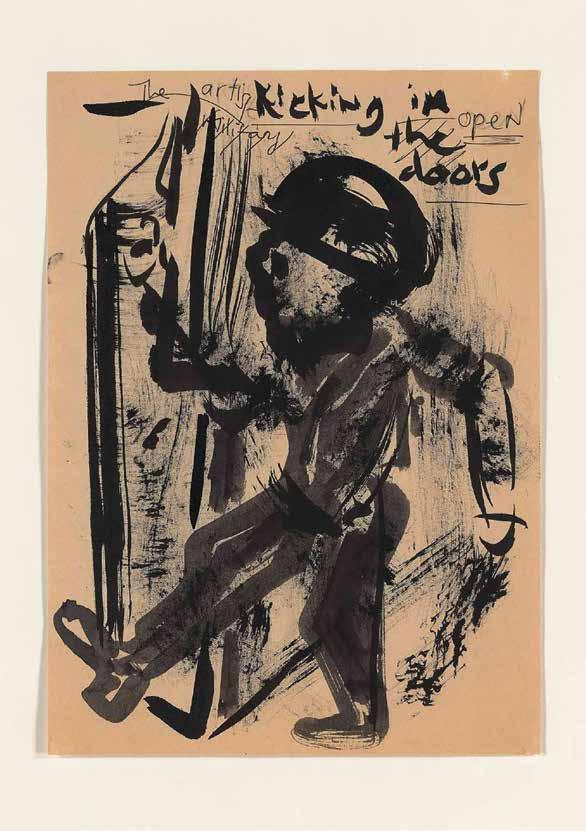
48
LER READ
Simone de Beauvoir, Le Deuxième Sexe. Paris: Éditions Gallimard, 1949. (Lisboa: Quetzal Editores, 2015)
Maria Isabel Barreno, Maria Velho da Costa e Maria Teresa Horta, Novas Cartas Portuguesas, Lisboa: Publicações INII, 1966
Natália Correia, A Madona Lisboa: Presença, 1968
Linda Nochlin, “Why Are There No Great Women Artists?”, Woman in Sexist Society: Studies in Power and Powerlessness, Nova Iorque: Basic Books, 1971
Lucy Lippard, From the center: Feminist essays on women’s art, Nova Iorque: E.P. Dutton, 1976 bell hooks, Ain’t I a Woman?: Black women and feminism. Boston: South End Press. 1981
Griselda Pollock, Vision and difference: Femininity, feminism and the histories of art Londres: Routledge, 1988
Angela Davis, Women, Culture, and Politics, Nova Iorque: Random House, 1989
WACK!: Art and the Feminist Revolution, cat. exp., Los Angeles: The Museum of Contemporary Art, 2007
Radical Women: Latin American Art, 1960-1985, cat. exp., Los Angeles: Hammer Museum, 2017
Astrida Neimanis, Bodies of Water: Posthuman Feminist Phenomenology, Londres: Bloomsbury Academic, 2017
Camila Sosa Villada, As Malditas, Lisboa: BCF Editores, 2022
VER SEE
Simone Forti, Five Dance Constructions and Some Other Things, 1961
Yvonne Rainer, Trio A, 1966
Martha Rosler, Vital Statistics of a Citizen, Simply Obtained 1977
Pipilotti Rist, Ever is Over All 1977
Agnès Varda, One Sings, the Other Doesn’t, 1977
Dara Birnbaum, Technology/Transformation: Wonder Woman, 1978-79
Patricia Rozema, I’ve Heard the Mermaids Singing 1987
Sally Potter, Orlando, 1993
Filipa César, Marco Martins, Insert, 2010
Ana Vieira, O desenho da menina a fugir do seu suporte 2014
Deniz Gamze Ergüven, Mustang, 2015
OUVIR LISTEN
Clara Schumann, Trio para piano em sol menor, opus 17, 1846
Johanna Beyer, Music of the Spheres, 1938
Nina Simone, Feeling Good, 1965
Yoko Ono, Sisters o sisters 1972
Alice Coltrane, Trancendance, 1977
Joan Jett, Bad reputation, 1980
Laurie Anderson, Born, Never Asked, 1981
Pauline Oliveros, Big Mother is Watching You, 1997
Rita Lee, Pagu, 2000
Capicua, Vayorken, 2008
Sophie, Bipp, 2013
Luisa Cunha, Artista à procura de si própria 2015
Odete, Início de Amarração 2018
Juliana Huxtable, Liminal Crisis, 2019
A Coleção de Serralves centra-se na arte contemporânea produzida desde os anos 1960 até à atualidade, distinguindo-se pela perspetiva internacional que proporciona sobre a arte portuguesa produzida desde esse período histórico de mudanças políticas, sociais e culturais a nível planetário. Cumprindo o seu programa de pesquisa e desenvolvimento permanentes, a Coleção de Serralves mantém uma aturada atenção à criação do século XXI, em particular à relação das artes visuais com a performance, a arquitetura e a contemporaneidade no âmbito de um presente pós-colonial e globalizado.
A Coleção de Serralves integra obras que são propriedade da Fundação de Serralves, incluindo um importante núcleo de livros e edições de artistas, e obras provenientes de várias coleções privadas e públicas que foram objeto de depósitos de longo prazo. De entre os acervos depositados em Serralves que constituíram pontos de referência para o seu desenvolvimento contam-se a Coleção de Arte Contemporânea do Estado (CACE) e a coleção da Fundação Luso-Americana para o Desenvolvimento (FLAD).
A presente mostra integra-se no programa de exposições e apresentação de obras da Coleção de Serralves, especificamente selecionadas para os locais de exposição com o objetivo de tornar o acervo acessível a públicos diversificados de todas as regiões do país.
The Serralves Collection focuses on contemporary art spanning from the 1960s to the present, offering an international perspective on Portuguese art since that historical period, which was marked by worldwide political, social and cultural change. In line with its continuous research and development programme, the Serralves Collection follows attentively the developments in twenty-first century creation, particularly in regard to the relationship between the visual arts and performance, architecture and contemporaneity in the context of a post-colonial, globalised present.
The Serralves Collection includes works that belong to the Serralves Foundation, including a significant corpus of artists’ books and publications, as well as works on long-term loan from several public and private collections, which were crucial references for its formation, such as the Portuguese State Contemporary Art Collection (CACE) and the Luso-American Development Foundation (FLAD) Collection.
Space for the Body is part of a programme of exhibitions and presentation of artworks from the Serralves Collection that are specifically selected for each location with the purpose of making the collection accessible to the public across all regions in the country.
51 50
COLEÇÃO DA FUNDAÇÃO DE SERRALVES MUSEU DE ARTE CONTEMPORÂNEA EXPOSIÇÕES ITINERANTES
Espaço para o corpo apresenta um conjunto de obras de artistas portuguesas e internacionais que problematizam o corpo enquanto agente criativo e percetivo, explorando a sua relação com o espaço e com a arquitetura, com a identidade e a intimidade. A exposição centra-se no trabalho de mulheres artistas que contribuem para aprofundar uma reflexão em torno do espaço e do corpo e para contestar os seus limites, explorando, por um lado, os contornos formais, fenomenológicos e conceptuais desta temática, por outro as suas implicações pessoais, sociais e políticas.
Space for the Body presents a set of works by Portuguese and international artists that focus on the body as a creative and perceptive agent, exploring its relationship with space, architecture, identity, and intimacy. The exhibition focuses on the work of women artists who have deepened a reflection about space and the body, challenging its limits. While some artists explore the formal, phenomenological, and conceptual outlines of this theme, others delve into its personal, social, and political implications.
www.serralves.pt
MUSEU IBÉRICO DE ARQUEOLOGIA E ARTE DE ABRANTES
Jardim da República, 25, 2200-343 Abrantes
CONTACTOS CONTACTS
+351 241 330 103 | museusdeabrantes@cm-abrantes.pt | www.museusdeabrantes.pt
HORÁRIO SCHEDULE
Terça a Domingo Tuesday to Sunday: 10h00 — 12h30 e and 14h00 — 17h30
52 Apoio Institucional Institutional Support











































